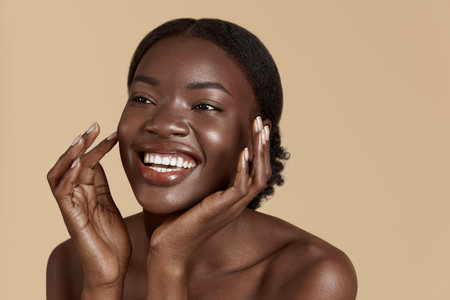Understanding Dry Skin and Makeup
Dry skin is a common issue for many Americans, thanks to factors like genetics, harsh weather, indoor heating, and even regional climates ranging from the dry Southwest to the chilly Northeast. When your skin lacks enough natural oils, it can become flaky, tight, or even irritated. Adding makeup into the mix can sometimes make matters worse. Foundations with alcohol-based formulas or matte finishes may cling to dry patches, highlighting them instead of smoothing them out. Even popular powders and long-wear concealers can sap moisture from your skin if you’re not careful. In America’s diverse environments—think windy Chicago winters or sun-soaked Los Angeles afternoons—the wrong makeup choices may intensify dryness. Understanding how your favorite products interact with your skin type and local climate is the first step toward achieving that healthy glow everyone wants.
2. Common Makeup Mistakes That Aggravate Dryness
When it comes to getting that dewy, glowing complexion, dry skin can be a real challenge—especially if you’re making some classic makeup mistakes. Even the best intentions can backfire if you don’t know what to avoid. Below, we break down the most common habits that might be sabotaging your skin and offer simple swaps for a more hydrated look.
| Makeup Habit | Why It’s Bad for Dry Skin | American Beauty Hack |
|---|---|---|
| Using Matte or Powder Foundations | These formulas soak up natural oils, making flakes and dry patches even more noticeable. | Opt for hydrating or dewy liquid foundations with moisturizing ingredients like hyaluronic acid. |
| Skipping Primer or Moisturizer | Applying makeup directly on bare, unprepped skin can cause foundation to cling to dry spots. | Always start with a rich moisturizer and a hydrating primer to create a smooth canvas. |
| Overusing Setting Powder | Too much powder can settle into fine lines and make skin look dull or cakey. | Use setting spray instead of powder for a fresh finish, or only powder oily areas like the T-zone. |
| Not Exfoliating Regularly | Buildup of dead skin cells makes it hard for makeup to blend evenly and highlights dryness. | Add gentle exfoliation 1-2 times a week to keep your skin smooth and flake-free. |
| Applying Foundation with Fingers | Fingers can tug at dry patches and create streaks, worsening texture issues. | Use a damp beauty sponge for seamless application and extra hydration boost. |
| Neglecting Lip Prep | Lipstick clings to chapped lips, making them look even drier. | Exfoliate lips and use a nourishing balm before applying color. |
Avoiding these pitfalls is key if you want your makeup to work for—not against—your dry skin. By swapping out drying products and prioritizing hydration at every step, you’ll get closer to that American “glow-up” everyone loves. In the next section, we’ll share specific prep steps that really make a difference for dry complexions.

3. Choosing the Right Products for Dry Skin
If you struggle with dry skin, your makeup choices can make all the difference. American beauty experts agree that hydrating formulas are key to maintaining a dewy, healthy look without worsening dryness. When shopping for foundation, look for liquid or cream-based options enriched with ingredients like hyaluronic acid, glycerin, or squalane—favorites in brands such as Neutrogena’s Hydro Boost line or IT Cosmetics’ Your Skin But Better CC+ Cream. Avoid powders and matte foundations that can settle into dry patches and emphasize flakiness. For concealer, choose creamy textures like NARS Radiant Creamy Concealer or Maybelline Fit Me Dewy + Smooth, which provide coverage without caking. Moisturizing primers—think Smashbox Photo Finish Primerizer—prep your skin and help lock in hydration before applying any color products. Don’t forget your lips; opt for nourishing tinted balms from Burt’s Bees or Fresh Sugar Lip Treatment instead of matte lipsticks. By picking products specifically designed to hydrate and soothe, you’ll enjoy makeup that not only looks flawless but also supports glowing, comfortable skin all day long.
4. Prepping Your Skin Like a Pro
If you want your makeup to look flawless and stay comfortable all day, prepping your skin is everything—especially for dry skin. American beauty lovers swear by a few clever hacks that create the perfect canvas. Here’s how you can hydrate, prime, and prep like a pro for a gorgeous glow.
Hydration First: Lock in Moisture
Start with a gentle cleanser that doesn’t strip your skin’s natural oils. Follow up with a hydrating toner or essence—look for ingredients like hyaluronic acid or glycerin. These act as moisture magnets, drawing water into your skin and keeping it plump.
Moisturizer Matters
Choose a moisturizer that suits your dryness level. For super parched skin, opt for creams rich in ceramides or shea butter. If you prefer something lighter but still effective, gel-creams infused with aloe or squalane are favorites stateside.
| Product Type | Best For | Popular Ingredients |
|---|---|---|
| Cream Moisturizer | Very dry skin | Ceramides, Shea Butter, Glycerin |
| Gel-Cream Moisturizer | Combination/dry skin | Aloe Vera, Squalane, Hyaluronic Acid |
| Face Oil (as booster) | Extra hydration boost | Jojoba Oil, Rosehip Oil, Marula Oil |
The Power of Priming: Smooth Things Out
An American favorite: use a hydrating primer before any foundation. Silicone-free primers with added skincare benefits (like niacinamide or peptides) help blur imperfections without drying out your skin. This extra step locks in moisture and ensures your makeup won’t cling to flaky spots.
Lip & Under-Eye Prep Tips
Lips and under-eyes can get especially dry. Apply a nourishing balm to your lips and an eye cream under your concealer to prevent caking and cracking—two common complaints among U.S. beauty enthusiasts in drier climates.
Quick Prep Checklist:
- Use lukewarm water—not hot—to cleanse.
- Apply skincare products while your face is still slightly damp for better absorption.
- Layer lightweight serums under heavier creams if you need extra hydration.
- Don’t forget sunscreen! Opt for one with added moisturizers suitable for dry skin.
The right prep routine makes all the difference—your makeup will glide on smoother and look naturally radiant, just like the glowing looks trending across America!
5. Application Techniques for a Dewy, Healthy Glow
When it comes to achieving a radiant, dewy look without highlighting dry patches, American makeup artists swear by some tried-and-true methods. The first step is always to start with well-prepped skin—think rich moisturizers and hydrating primers that create a smooth base. For foundation, ditch heavy mattes and opt for lightweight, luminous formulas like tinted moisturizers or foundations with a satin finish. Use a damp beauty sponge to gently press product into the skin; this technique helps blend makeup seamlessly and avoids the cakey buildup that accentuates dryness.
Layering is key: apply thin layers and build coverage only where needed. To keep your glow looking fresh, reach for liquid or cream highlighters instead of powders. Gently tap them onto the high points of your face—cheekbones, brow bones, and down the bridge of your nose—using your fingers or a sponge for a natural sheen. Bronzing creams and blushes are also preferred over powders to maintain that supple appearance Americans love.
Setting sprays play a huge role in locking in moisture and preventing makeup from settling into dry areas. Look for dewy-finish sprays containing ingredients like glycerin or hyaluronic acid. As a pro tip from U.S. artists: avoid over-powdering! If you must set your makeup, dust translucent powder sparingly on oily zones only (like the T-zone) using a fluffy brush.
Finally, don’t forget about touch-ups throughout the day. Instead of layering more powder or foundation, revive your glow with a mist of hydrating spray or by gently patting a small amount of moisturizer onto dull spots with clean fingertips. By adopting these American beauty hacks, you can enjoy a flawless look that enhances your natural radiance—never your dryness!
6. Setting and Refreshing Makeup Throughout the Day
One of the biggest challenges for those with dry skin is keeping makeup looking fresh all day without making dryness worse. The secret? Choosing the right setting sprays, hydrating mists, and touch-up routines that work with your skin instead of against it. American beauty experts swear by alcohol-free, dewy finish setting sprays that lock in moisture and help makeup stay put—think Urban Decay’s All Nighter Ultra Glow or the cult-favorite Morphe Continuous Setting Mist. For midday refreshers, a quick spritz of a hydrating facial mist like Mario Badescu’s Facial Spray with Aloe, Herbs and Rosewater instantly revives dull skin and melts away any powdery look.
When it comes to touch-ups, avoid piling on more powder (a common culprit for cakey, flaky makeup). Instead, gently blot any shine with blotting papers or a soft tissue, then pat a little cream-based concealer or foundation only where needed. Always use clean hands or a sanitized beauty sponge to avoid irritation. This simple routine ensures your complexion stays glowing and comfortable from morning coffee runs to evening plans—all while keeping dryness at bay.
7. When to See a Dermatologist
Sometimes, even the best beauty hacks and over-the-counter products just aren’t enough. If your dry skin is persistent, painful, or accompanied by symptoms like redness, swelling, cracking, or bleeding, it might be time to consult a dermatologist. In the U.S., you can start by talking to your primary care physician for a referral, or you can look up board-certified dermatologists in your area through resources like the American Academy of Dermatology’s website.
Signs You Need Professional Help
If your dryness doesn’t improve with moisturizer and gentle skincare, or if makeup consistently irritates your skin, these could be signs of underlying conditions such as eczema, psoriasis, or allergic reactions. Don’t ignore severe itching, burning, or changes in skin texture—these warrant professional evaluation.
Navigating American Healthcare
Most health insurance plans cover dermatologist visits if deemed medically necessary. If you don’t have insurance, many clinics offer sliding scale fees based on income. Teledermatology is also an option in many states, letting you consult with a professional from home.
Your Skin Deserves Expert Care
Healthy, glowing skin is possible with the right routine—but when at-home remedies aren’t enough, don’t hesitate to reach out for expert help. A dermatologist can provide customized treatment and guide you toward makeup and skincare products that work with your skin type. Remember: seeking help is a form of self-care and ensures your beauty routine supports—not sabotages—your glow.


